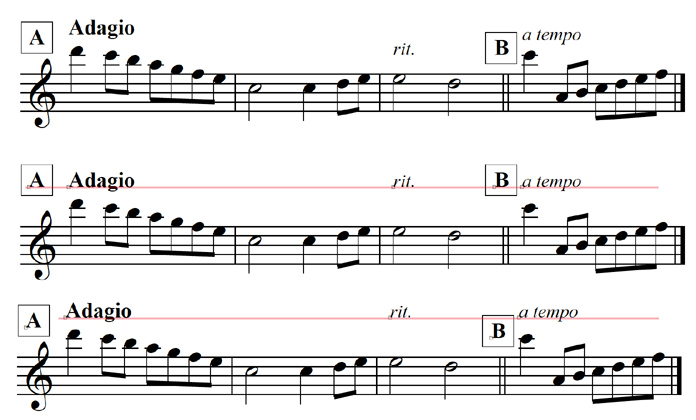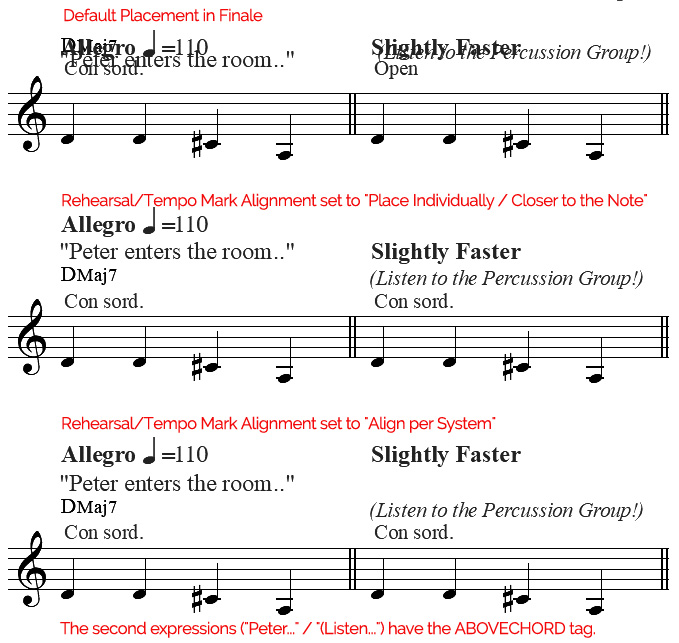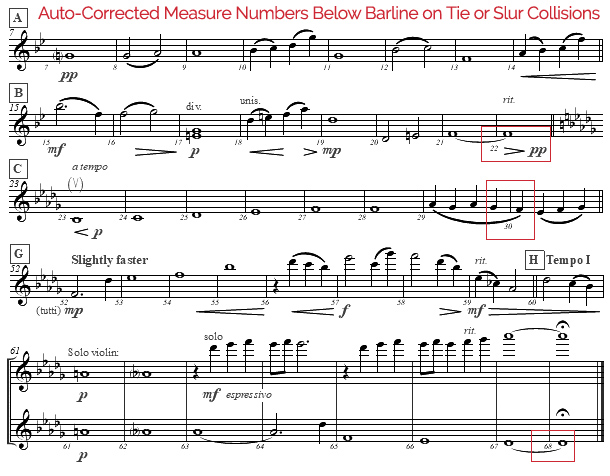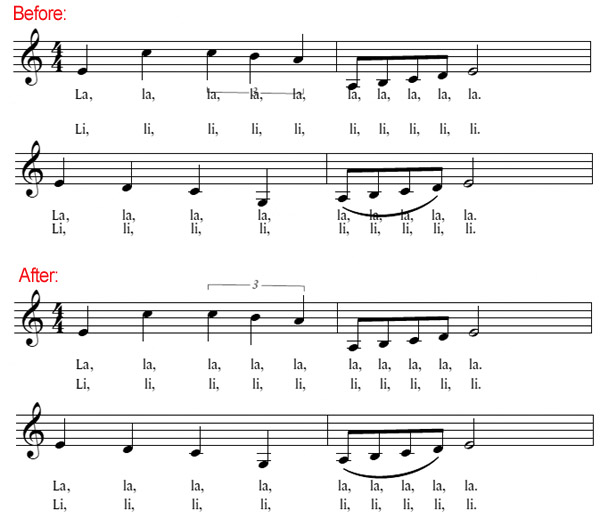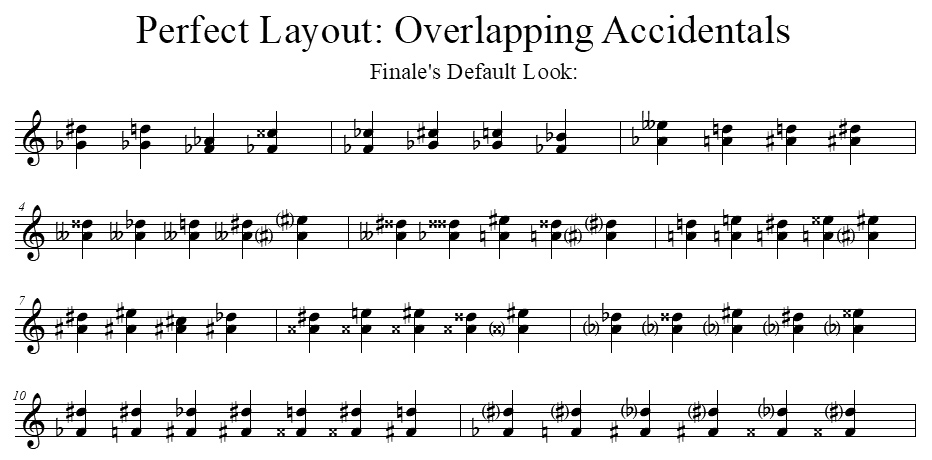Some general options for expression, articulation and hairpin alignment can be set on this tab:
An "
Extra Vertical Collision Offset" can be set here (Default: 5 EVPU). This value is added to all vertical offsets on the expression, articulation and hairpin tab and makes it easy to generally increase the vertical distances of two objects. Don't forget to also adjust the "
Below Staff Baseline Position" and/or the "
Vertical Entry Offset" on the "Optimize" tab in order to adjust the general placement of dynamics and expressive text.
The Silver edition has eight predefined values (-9, -6, -3, 0, 5, 10, 15 or 20 EVPU), while the Gold edition is fully flexible.
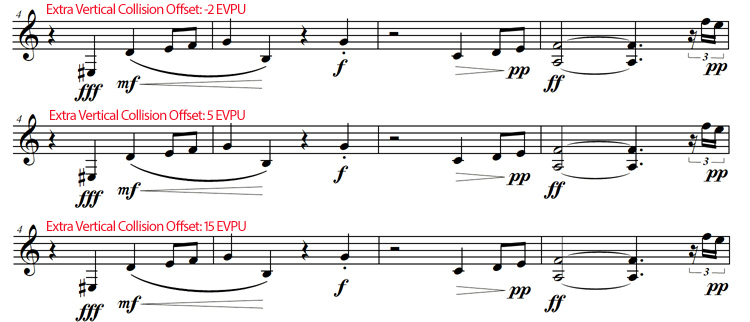
Image 3: Extra Vertical Collision Offset: -2, +5 and +15 EVPU
Note: If there is enough space before the
fff in measure 1 and the
fff would be placed below the "Express.->Very Low Note Threshold Below Staff Line" value, Perfect Layout will automatically move it
before the first note (not below).
The "
Harmonize Offsets and Aligment of Rehearsal and Tempo Marks" option harmonizes the offsets in the Rehearsal Marks, Tempo Marks and Tempo Alteration categories which improves their horizontal and vertical alignment.
The overall vertical alignment of hairpins, dynamics and expressive text on a system is done in a complex algorithm which takes into account many vertical and horizontal positions and distances and tries to create a visually balanced and pleasing look.
The options for the algorithm are:
a.)
Vertically Align Dynamic Expressions Only If Connected by Hairpins: self-explanatory (see image 4 below)
b.)
Even out Vertical Alignment of Hairpins and Dynamic Expressions: If selected, the vertical alignment algorithm is run twice. This usually leads to more hairpins and dynamics being on the same vertical position and thus look smoother.
In the parts where there is usually more vertical space available and where readability is much improved by dynamics and hairpins being on the same vertical position, it makes sense to align close dynamics also if unconnected and to even out the vertical alignment.
In the score these options usually are selected the other way round. These are also the default settings.
Single dynamics on very low notes are usually not taken into account for overall vertical alignment (see the
fff and the
ff in image 3 above).

Image 4:
Top: All dynamics are aligned, also if unconnected.
Bottom: Only those dynamics are aligned that are connected by a hairpin.
